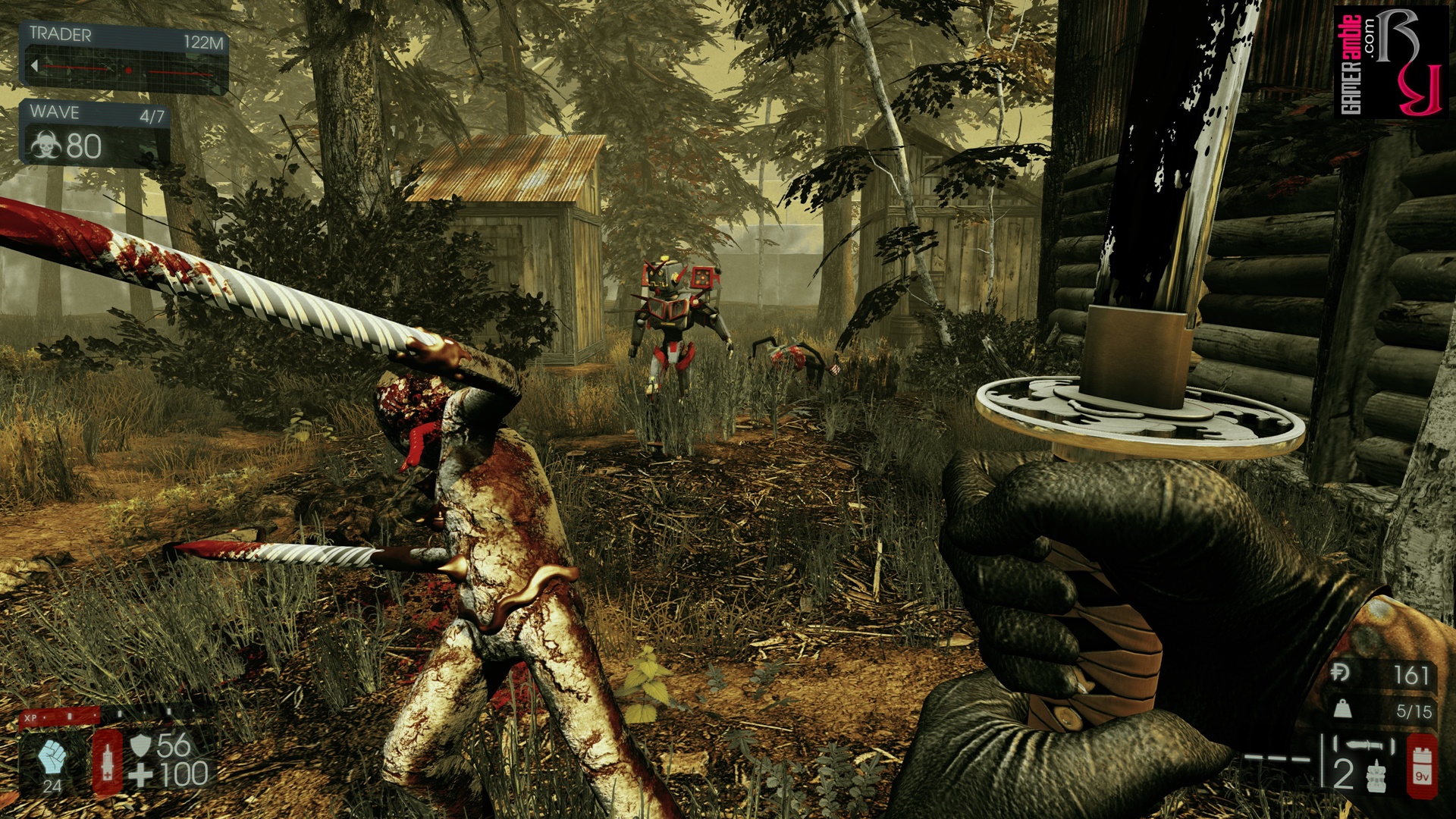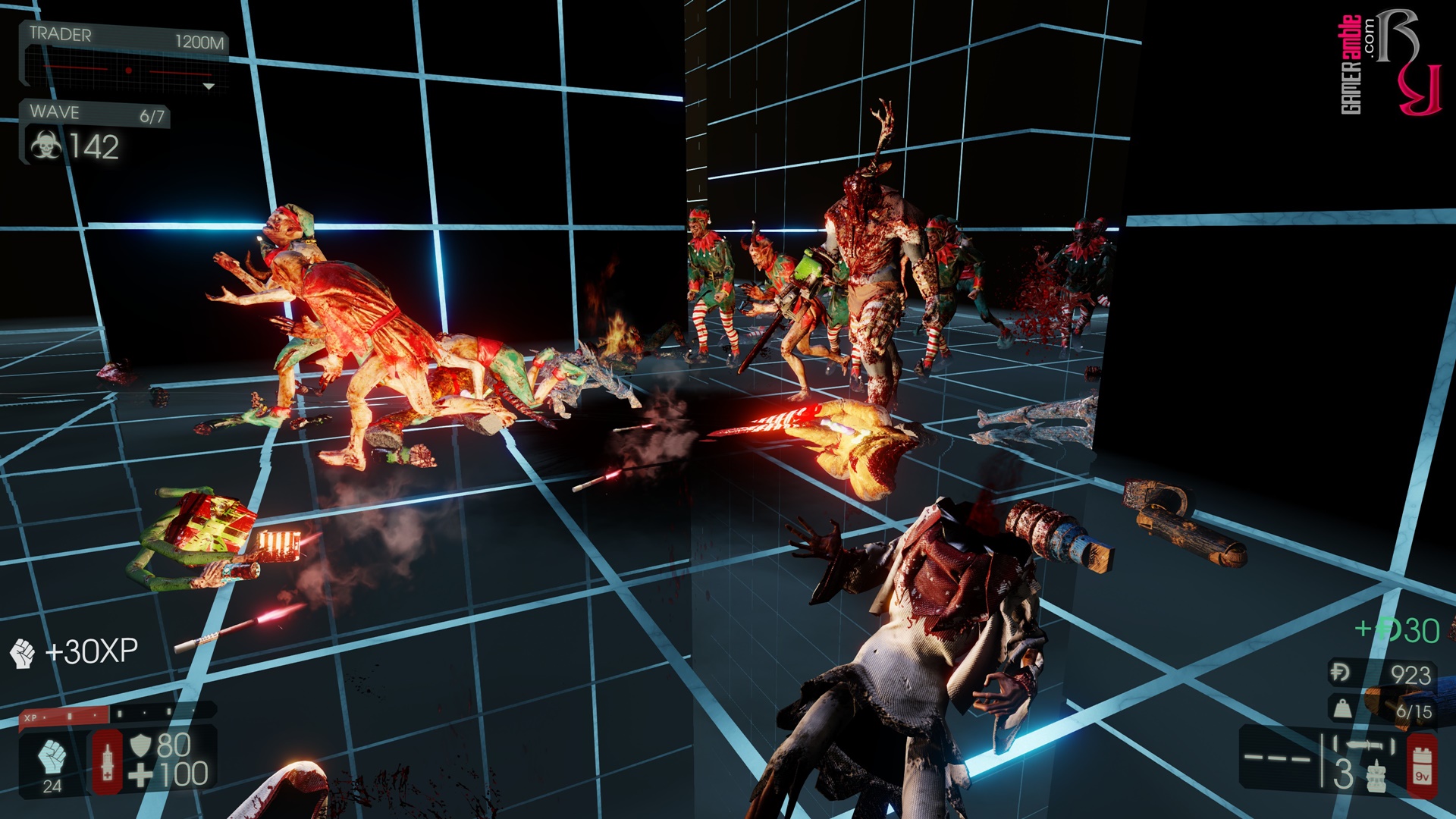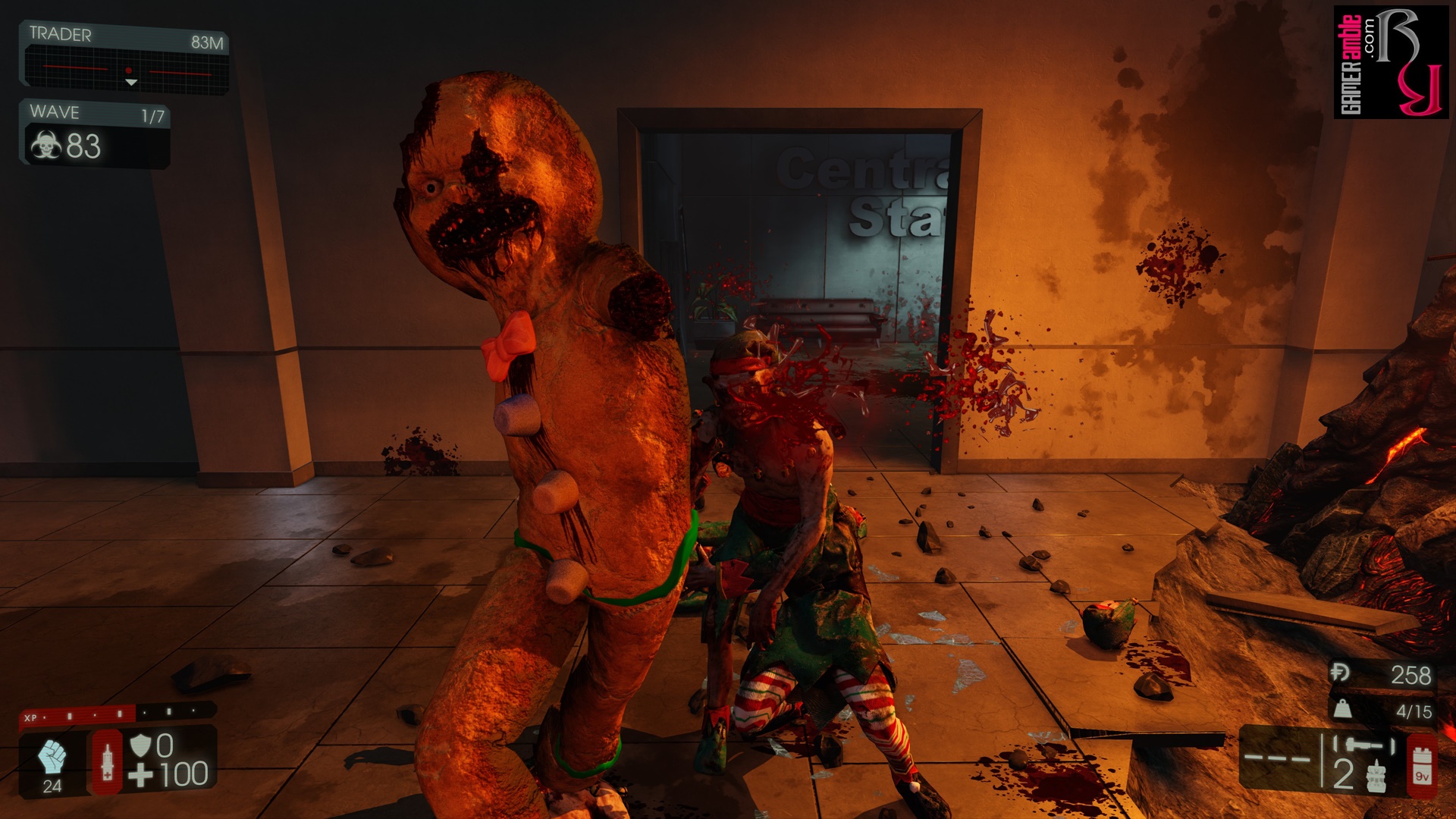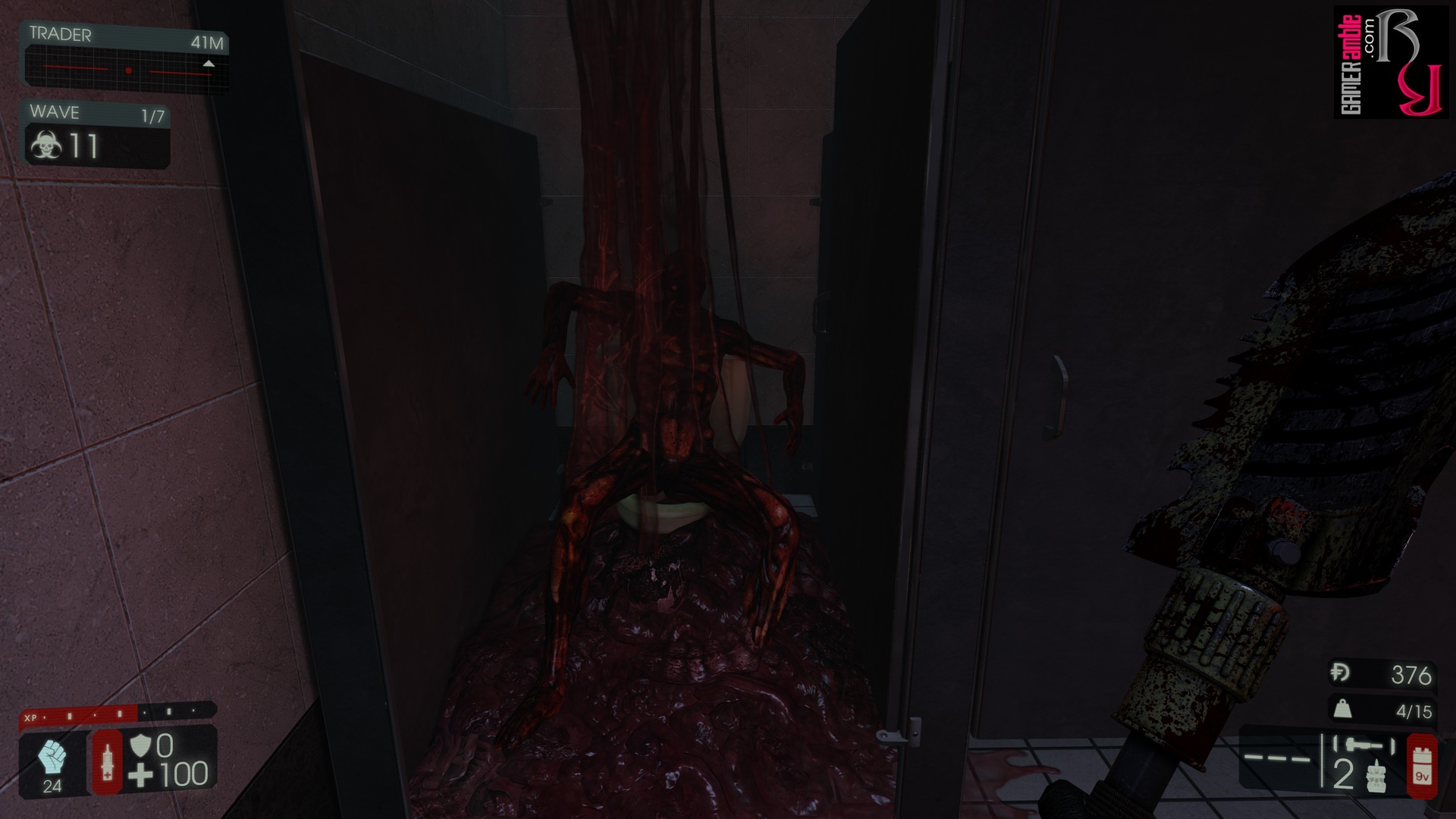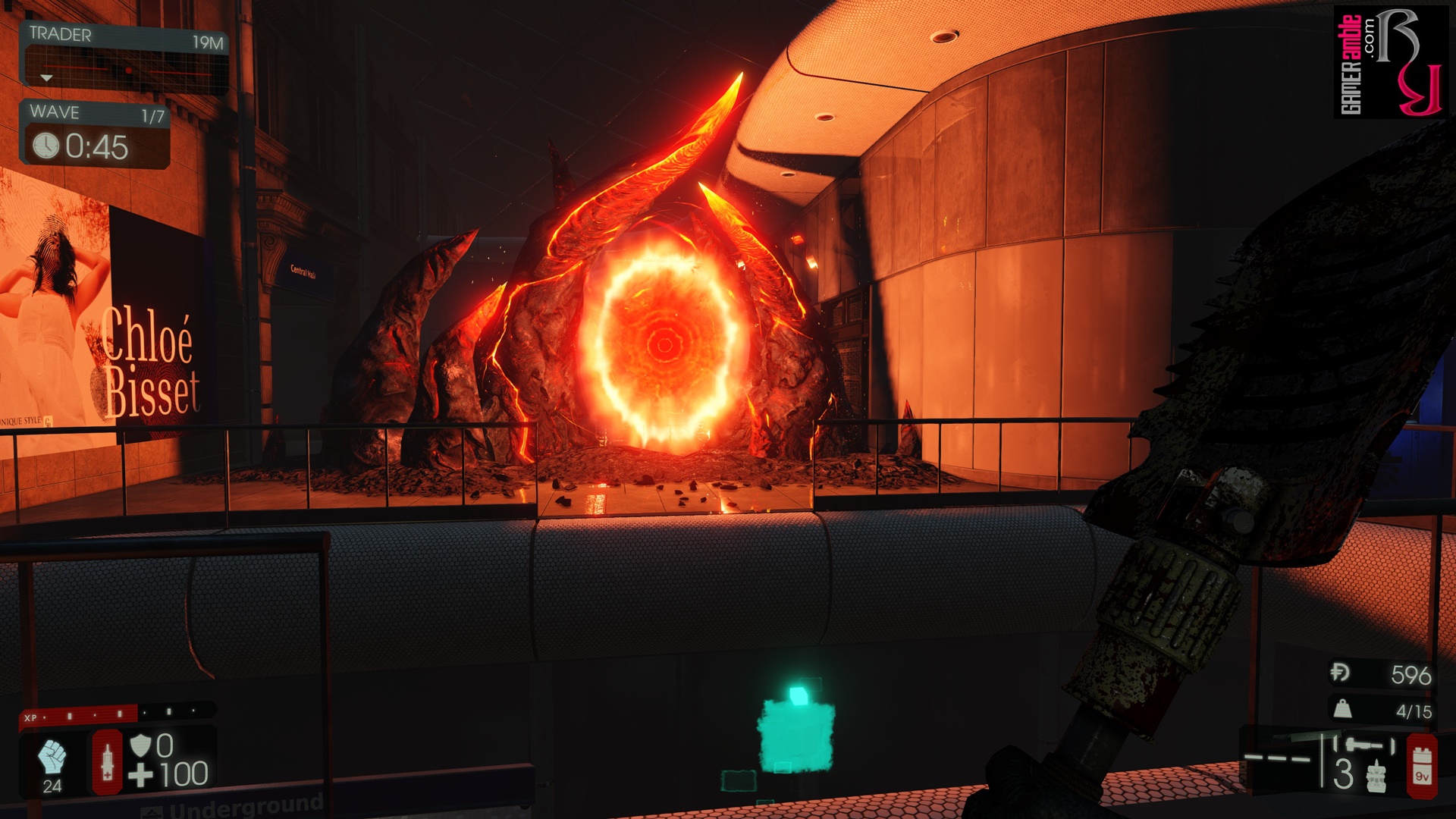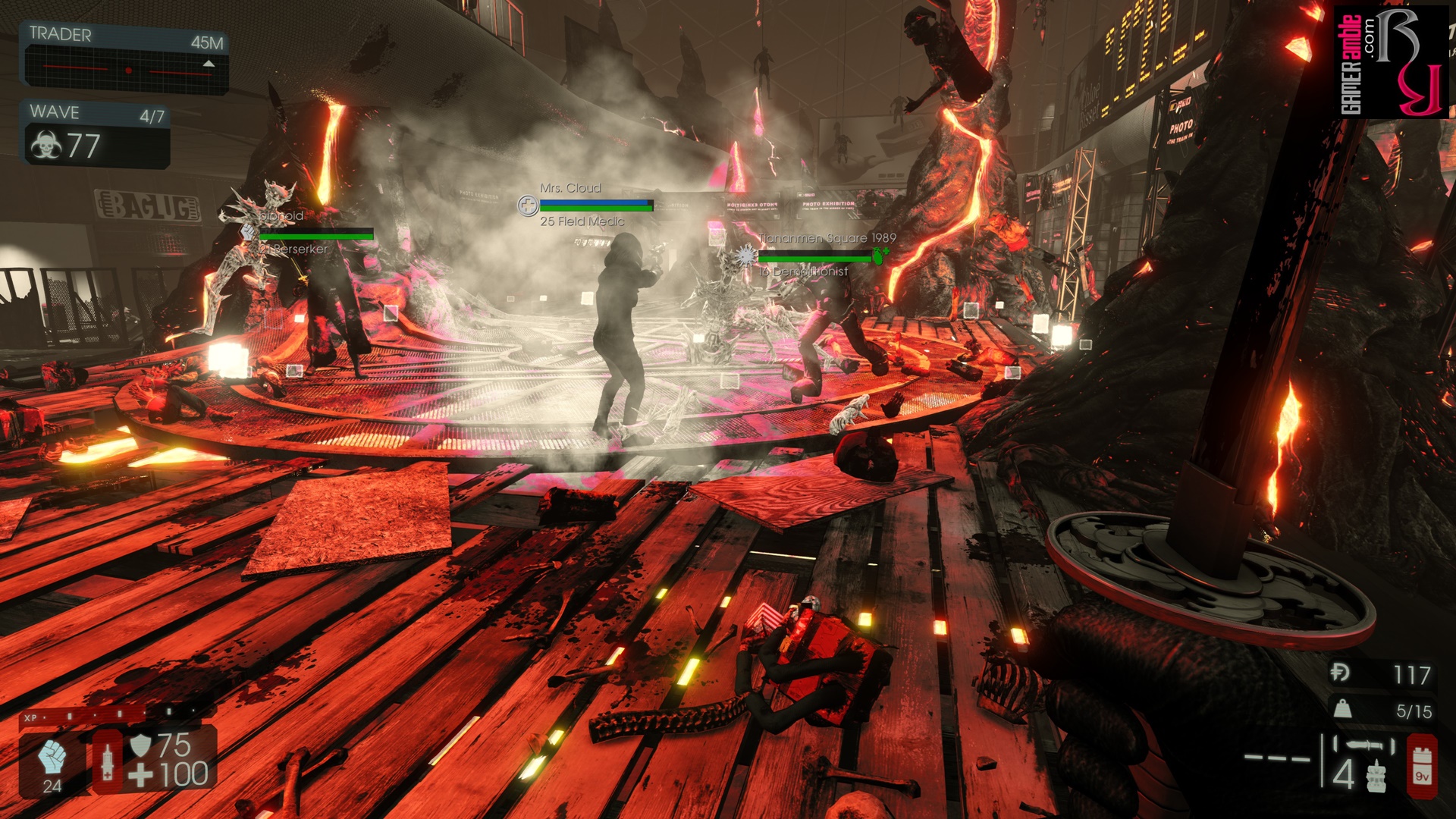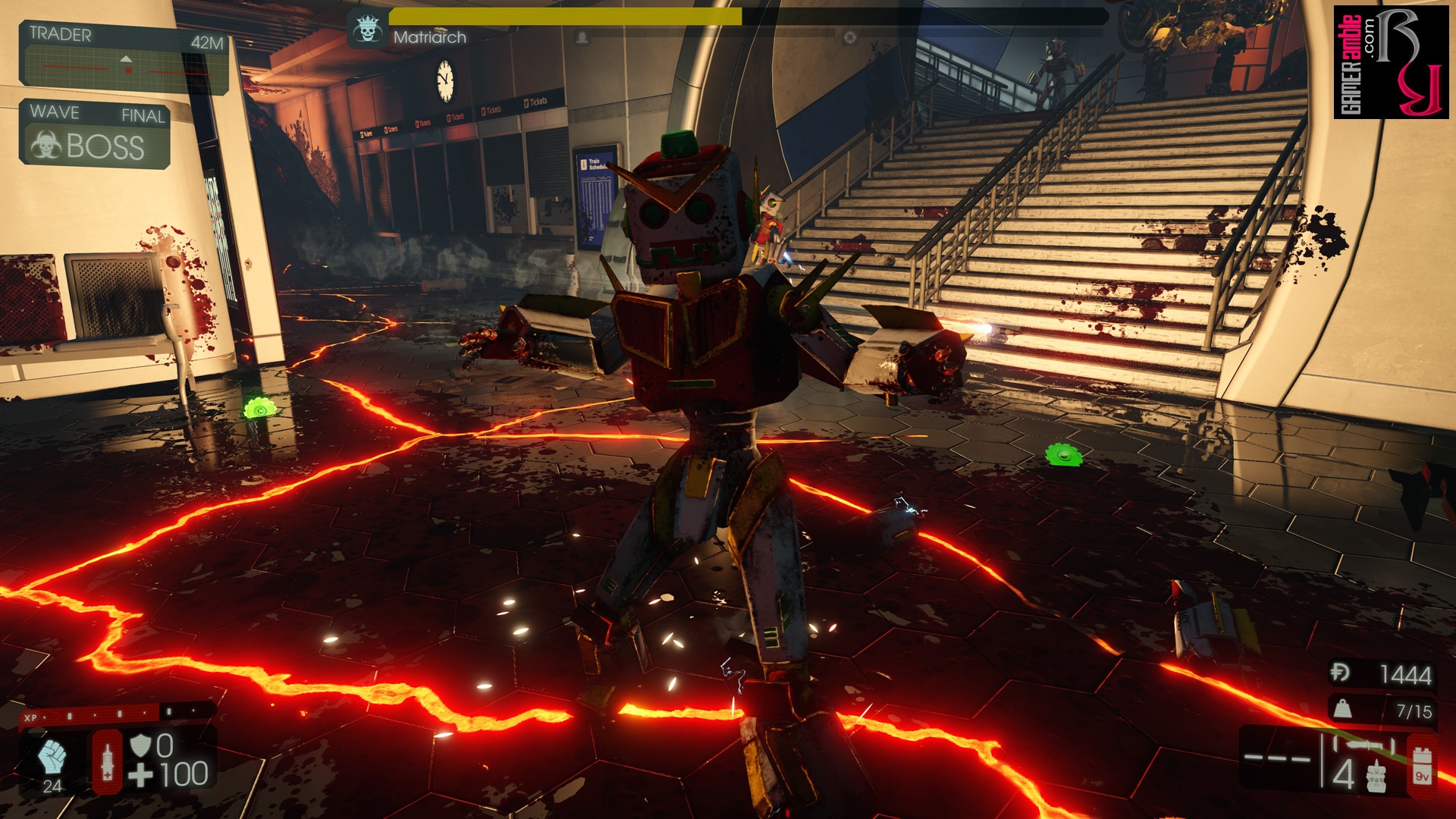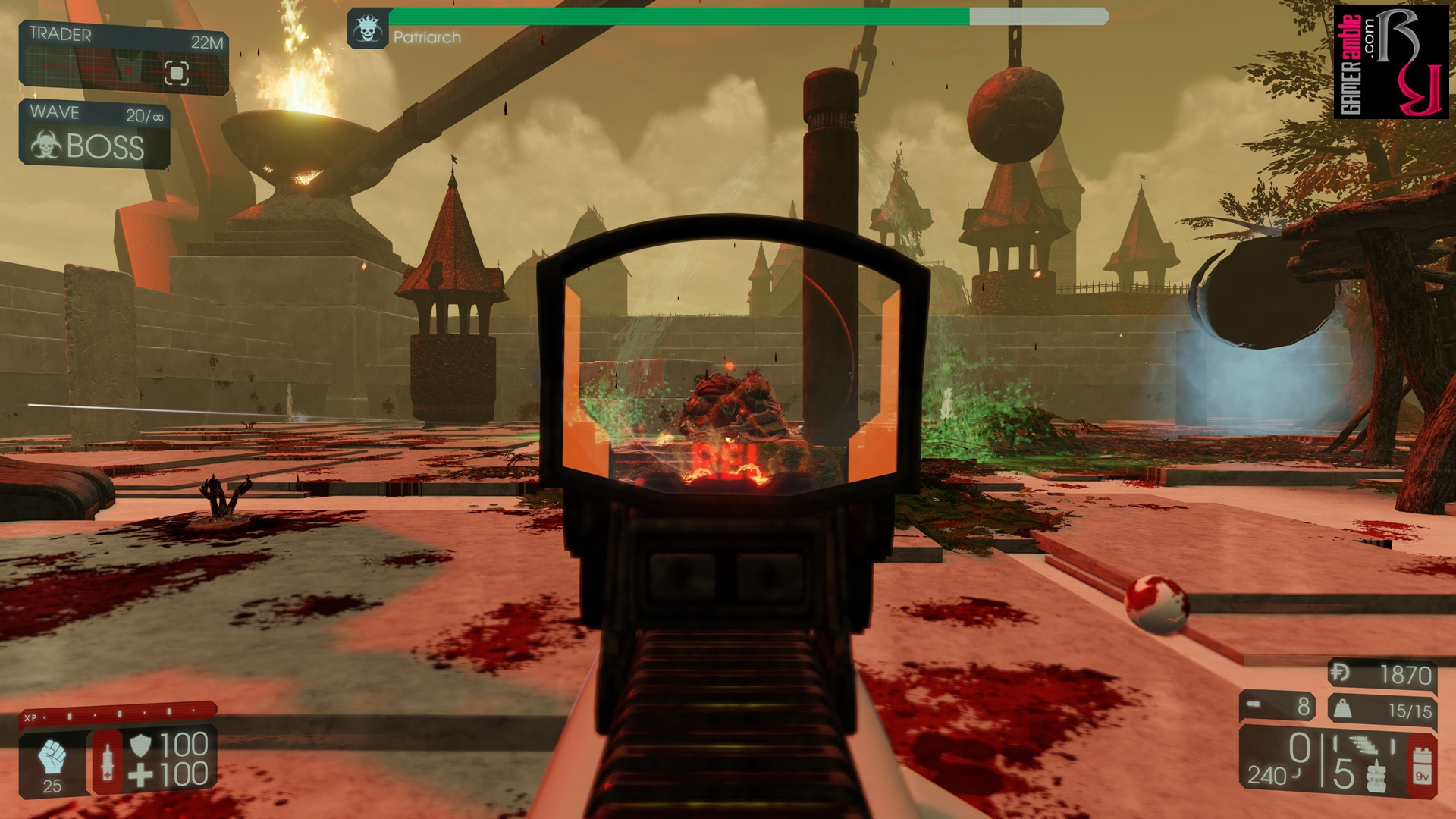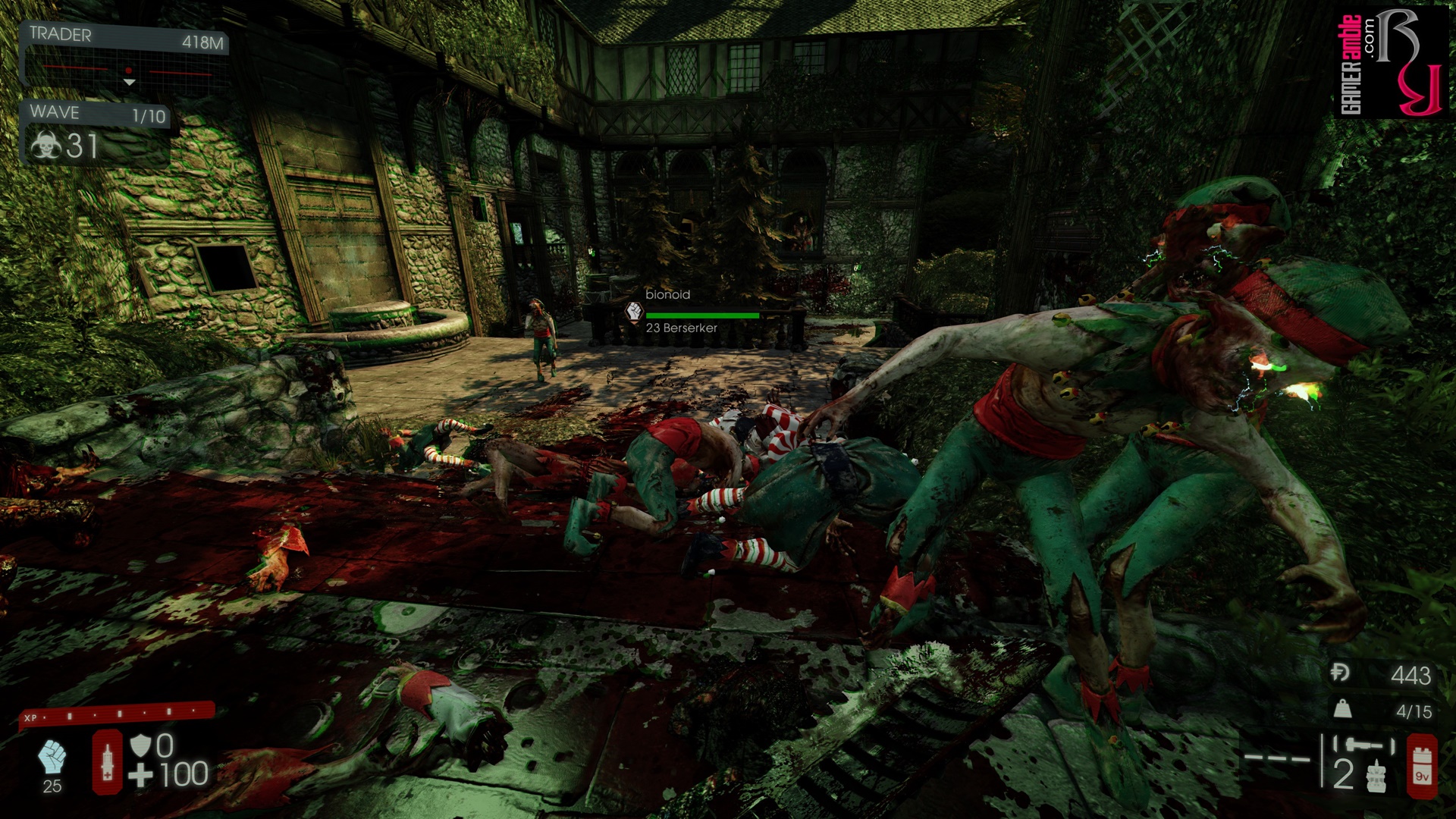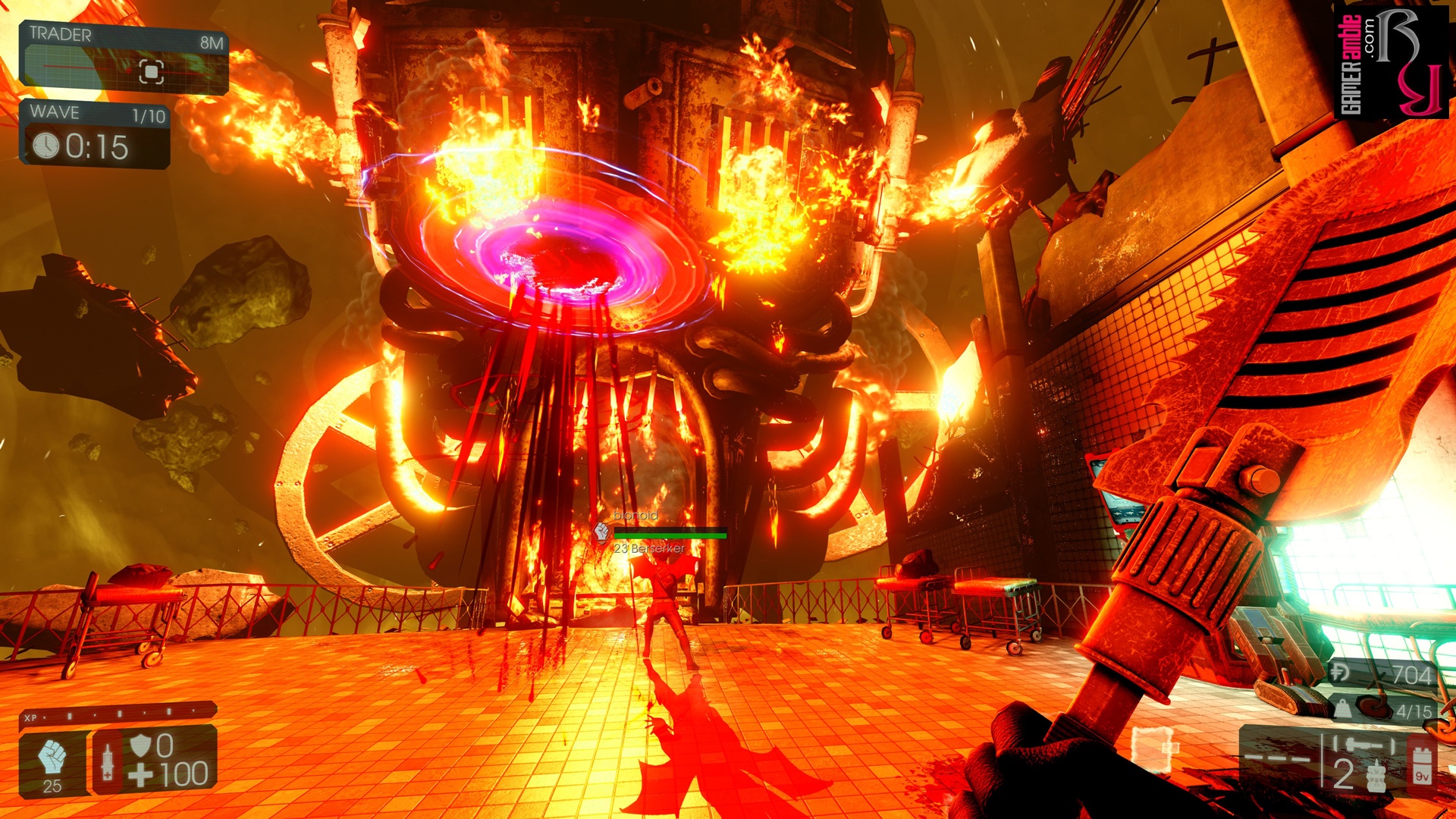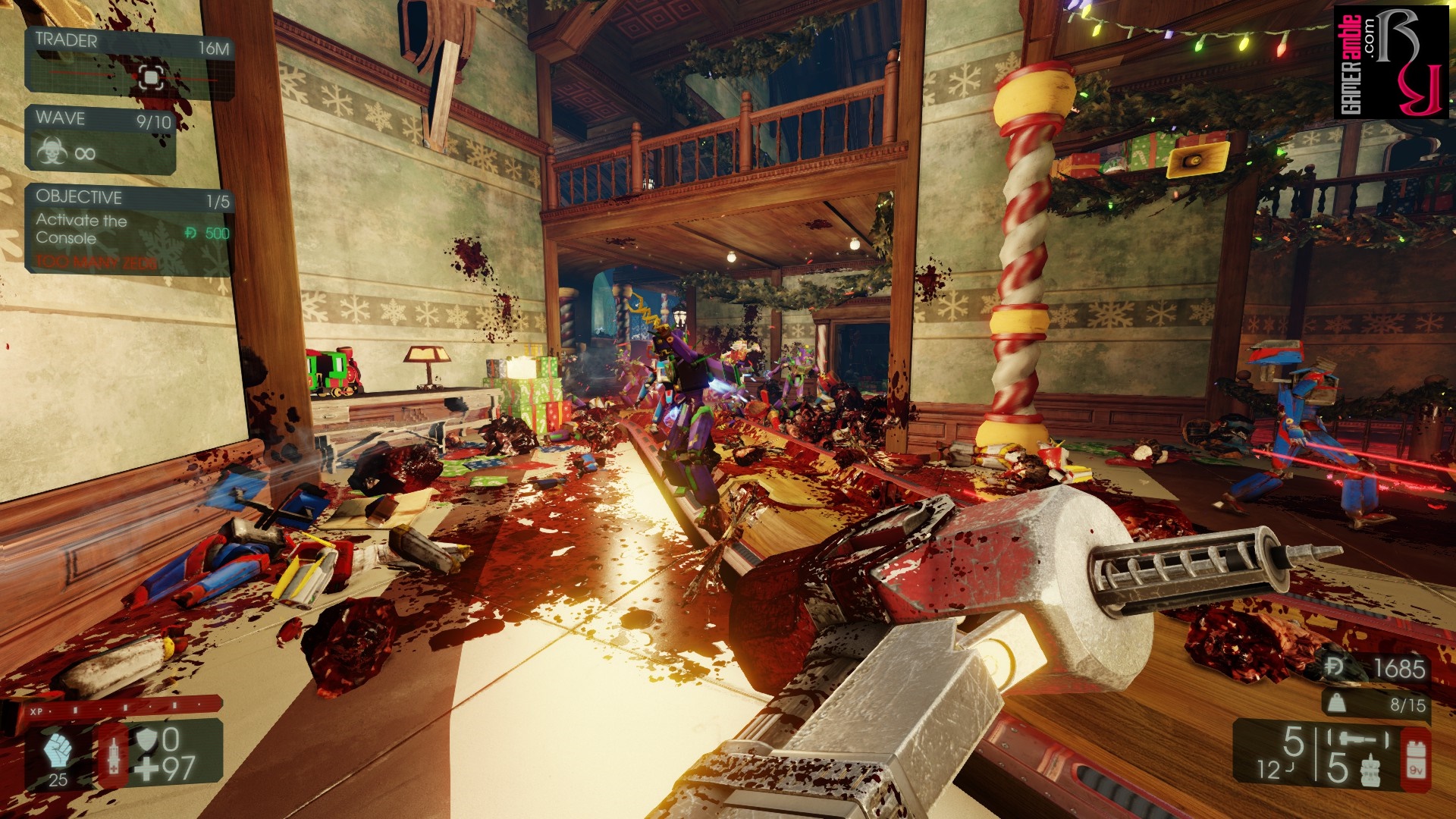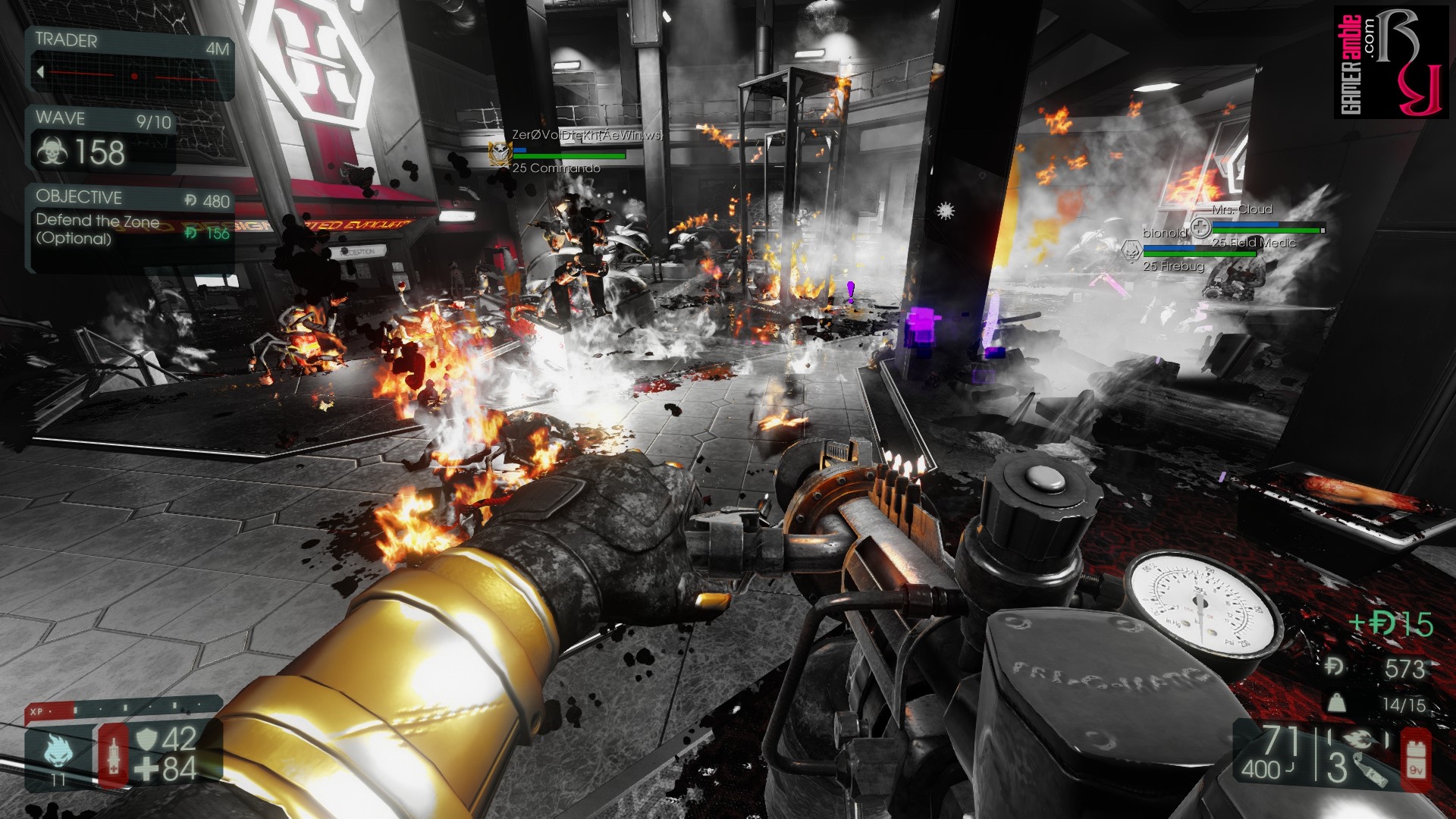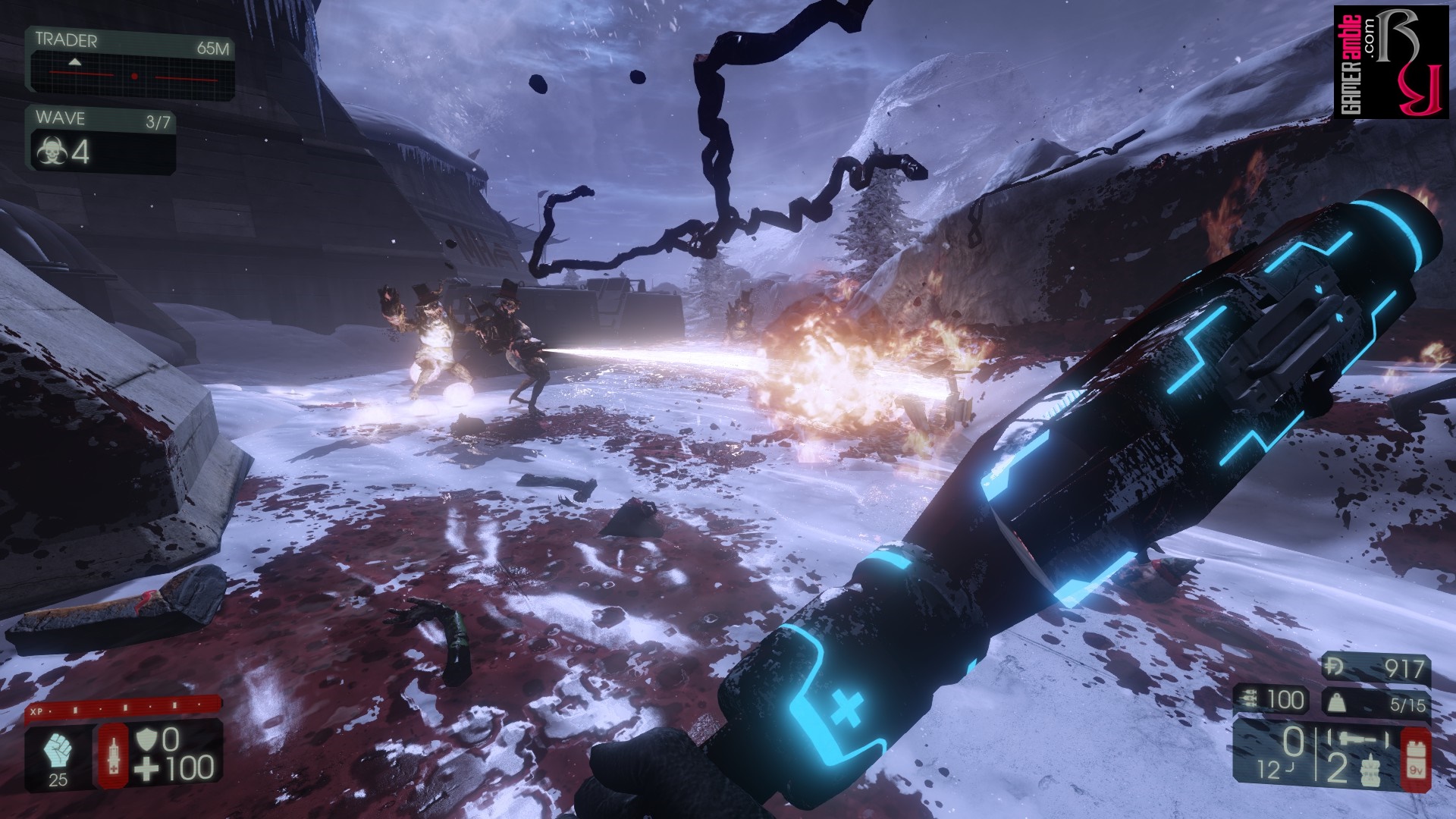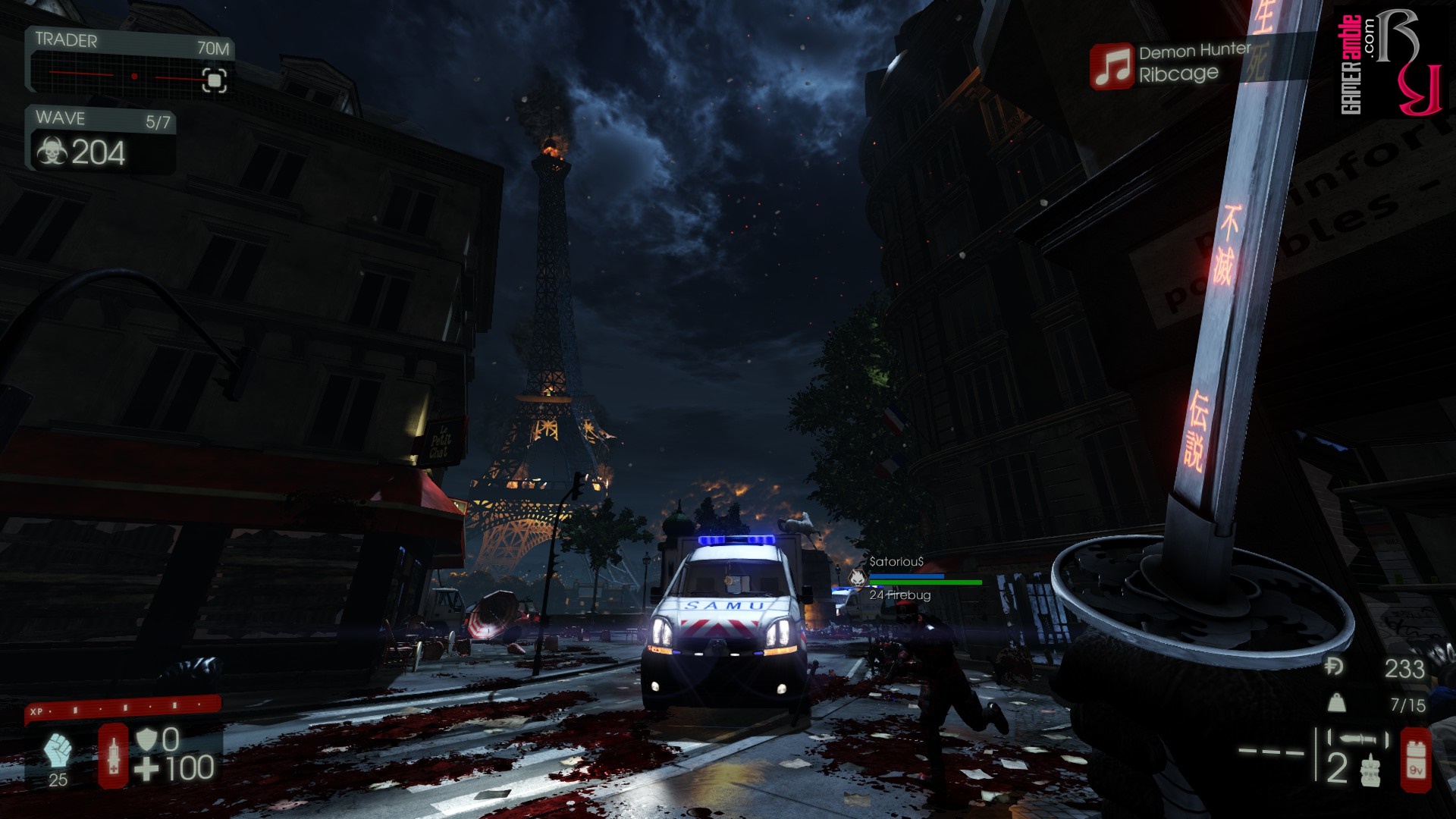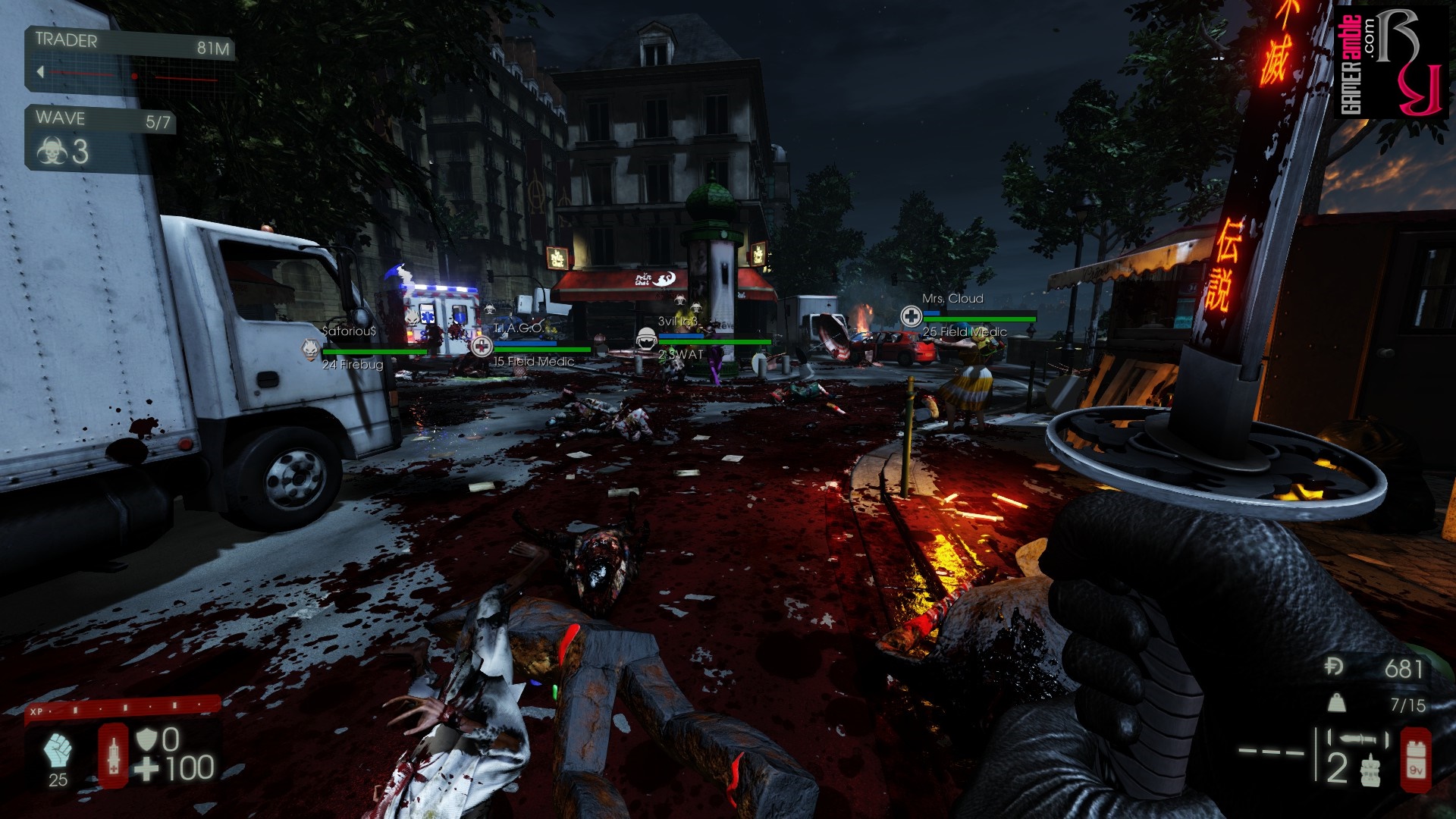Killing Floor 2
Developer: Tripwire Interactive | Publisher: Tripwire Interactive | Release Date: 2016 | Genre: First Person Shooter / Action / Survival | Website: Official Website | Purchase: Steam
The original Killing Floor, which started as a total conversion mod for Unreal Tournament 2004, might not have been the best looking game of its time, but it was undeniably addictive. The sole purpose of the game was to massacre wave after wave of monstrous clones called “Zeds” with the aid of friends or strangers online. A handful of character classes added some variety to the game and the different types of Zeds ensured that teamwork was essential for survival. Thanks to the modest success of Killing Floor a sequel was inevitable and after a stint in Early Access Killing Floor 2 was fully released in 2016.
Killing Floor 2 does have a storyline, set after the events of the first title, but it merely serves to add some background flavor to the game. Like the original, it is a multiplayer game through and through with online co-op being the best way to experience the action. There is a “basic training” mode to teach new players the ropes as well as solo offline play for practice, but it is a rather hollow experience compared to the thrill of online play.
The basic formula of Killing Floor 2 remains the same as the original, so you are still picking a character class and then teaming up with other players to kill enemies in first person. The Field Medic, Support Specialist, Sharpshooter, Commando, Berserker, Firebug, and Demolitions expert from the first game are all still available along with new specializations, such as Gunslinger, SWAT, and Survivalist. These classes all have their own weapons and skills and earn experience points by using the weapons and skills associated with their class. So, for example, a medic will earn more experience points from healing other players while a sharpshooter gains more from performing headshots. Each class can level up to level 25, earning the ability to activate new perks every five levels along the way. These are a mix of active and passive abilities with players given a choice between two options at every five-level milestone. This means that even if two players are the same class they can have wildly different playstyles if they have selected different perks. Players are not locked to their choices either but can change their minds at any time, so feel free to experiment with what feels right.
With four difficulty levels available, players can start on “Normal” to get accustomed to the game and gain a few levels for their chosen classes, before moving on to the harder difficulties. These difficulties not only increase the resilience of the Zeds but also their speed and numbers. Skilled players can still get away with running off on their own at lower difficulties, but playing on Suicidal or above means sticking together or paying the price.
As with the first game, enemies attack in waves with a brief respite between each one for players to visit a trading pod where they can spend the “dosh” that they have earned. The amount of dosh is determined by how well players performed during the round and can be used to buy or repair armor, restock bullets, buy new weapons or upgrade old ones. Players have a weight limit, with upgraded weapons becoming heavier, so it’s impossible to go crazy and buy everything in the store even if you had the money. Dying also means losing everything in your inventory apart from whatever weapon you had in your hands, which is deposited on the floor. If you have decent teammates they will pick it up and return it to you during the trader phase, but when playing with strangers you also run into the occasional scumbag who will sell to benefit themselves.
The first thing that we noticed about Killing Floor 2 is that it is a much faster game than the original. In Killing Floor the best tactic was often to hunker down in an area, weld the access points shut to funnel the Zeds, and then concentrate your fire. In Killing Floor 2 remaining stationary for too long is usually a death sentence and the last thing you want is to get trapped in a room with no escape route. Players still have access to welders, but these are rarely used compared to the first game. In fact, since staying on the move is so effective in Killing Floor 2 the game even attempts to encourage players to “protect” certain areas with the promise of extra dosh should they be successful. The number of waves players face can be adjusted by whoever is running the server, but in the end, players will always face one of the bosses. Along with the Patriarch who returns from the first game, there are also a couple of new faces like Dr. Hans Volter, The Matriarch, Abomination, and King Fleshpound. These things are no push-overs and it is rare to see an entire team survive an encounter with them.
Visually Killing Floor 2 is much improved over the original thanks to the use of Unreal Engine 3. Players will be facing much of the same enemies as Killing Floor, but they look better than ever; and by “better” we mean meaner, grosser, and more nightmarish. Along with Lieutenant Masterson and Police Constable Briar making a return from the first game, Killing Floor 2 has a host of new faces, which can be further bolstered with the available DLC. The characters are all purely cosmetic, though, and none of them have any special traits or abilities that can influence the gameplay in any way. The same goes for the visual customization options that allow players to dress up their characters in a range of silly outfits and accessories. While the game features an in-game store with micro-transactions a lot of the cosmetics can be earned and unlocked simply by playing.
The maps in Killing Floor 2 range from sinister forests and labs to Paris, catacombs, a prison, outpost, and even a steampunk airship. Many of these were added for free to the game since its release and there are tons of other options available in the Steam workshop, including some favorites from the original. The new maps look great, but after a few waves, they tend to be covered from the floor to the ceilings in blood. Anyone who thought that the original game was gory is in for a shock when they see the absolute mayhem in this sequel. The developers have dramatically increased the number of dismemberment points each enemy has and the results are impressive, to say the least. Playing as a berserker gives players an up-close and personal view of the many ways in which Zeds can be chopped to pieces as their organs and limbs violently part ways in a shower of gore. The reload animations in the game are also quite impressive, especially considering the number of weapons that are on offer. In addition, the levels themselves feature some great visual effects, such as the volcano on the island map erupting during later rounds and completely changing the look and feel of the level. As with the first game Tripwire Interactive has continued to update Killing Floor 2 since its release, with the highlight being the numerous events that completely change the designs of enemies. For example, during Halloween, the Zeds take on the form of more traditional monsters while over Christmas they look a lot more festive.
On the technical side of things Killing Floor 2 has more than enough options to improve the visuals for those with the hardware to handle it or tone things down for players with older systems. Along with being able to set the aspect ratio, resolution, and graphics quality players can also tweak individual options such as texture resolution, bloom, ambient occlusion, depth of field, and so on. The game also supports Nvidia FLeX for gibs and fluids, which makes the bloodshed even more impressive. The audio complements the action perfectly with some industrial metal tracks to get the adrenaline flowing. When playing with friends we recommend using voice chat to coordinate things, but the game also includes hotkeys for some basic commands such as “Follow me,” “Get to the trader,” and “Need dosh.” Along with the grunts, groans, and screams of enemies, the player’s characters will also sometimes utter some catchphrases, but these can be toned down in the options for those who found them repetitive or annoying.
As Killing Floor 2 is a first-person shooter so the controls are fairly straightforward for anyone familiar with the genre. All the guns feel very satisfying to use, but the developers have also improved the melee combat in the game, which makes playing as a berserker more entertaining. The inclusion of a blocking mechanism provides some defense, but timing is required to master this skill, so there is a bit of a learning curve. The direction that your character is moving also influences the attack style of melee weapons, which adds a bit more variety to the hacking and slashing.
Although Tripwire Interactive stuck to the same basic formula as the original game it still takes a while to get used to the faster pace of this game. It’s worth the effort, though, as Killing Floor 2 is every bit as addictive as its predecessor. The inclusion of daily and weekly objectives along with the glut of special events has also given the game the type of longevity that is sorely lacking in many online shooters. It can still be frustrating and repetitive, especially when played with clueless strangers, but few things come close to the adrenaline rush of beating the harder difficulties with a well-coordinated group of friends. Since the initial release of the game Tripwire has added everything from objective-based maps to new robotic enemies, so who knows what the future holds for Killing Floor 2. One thing is for sure unless they make any drastic changes it’s going to remain bloody, addictive, and fun.
System Requirements
- Requires a 64-bit processor and operating system
- OS: Win7 64-bit, Win8/8.1 64-bit
- Processor: Core 2 Duo E8200 2.66GHz or Phenom II X2 545
- Memory: 3 GB RAM
- Graphics: GeForce GTS 250 or Radeon HD 4830
- DirectX: Version 10
- Network: Broadband Internet connection
- Storage: 60 GB available space
- Additional Notes: UNSUPPORTED HARDWARE: IntelHD Integrated Graphics Chips, 32-bit Operating Systems, NVIDIA ® FleX features require a GeForce ® GTX™ 770 or higher (GeForce ® GTX™ 980 recommended)
- Requires a 64-bit processor and operating system
- OS: Windows 10 64-bit
- Processor: Core 2 Quad Q9550 2.83GHz or Phenom II X4 955
- Memory: 4 GB RAM
- Graphics: GeForce GTX 560 or Radeon HD 6950
- DirectX: Version 11
- Network: Broadband Internet connection
- Storage: 100 GB available space
- Additional Notes: NVIDIA ® FleX features require a GeForce ® GTX™ 770 or higher (GeForce ® GTX™ 980 recommended)


